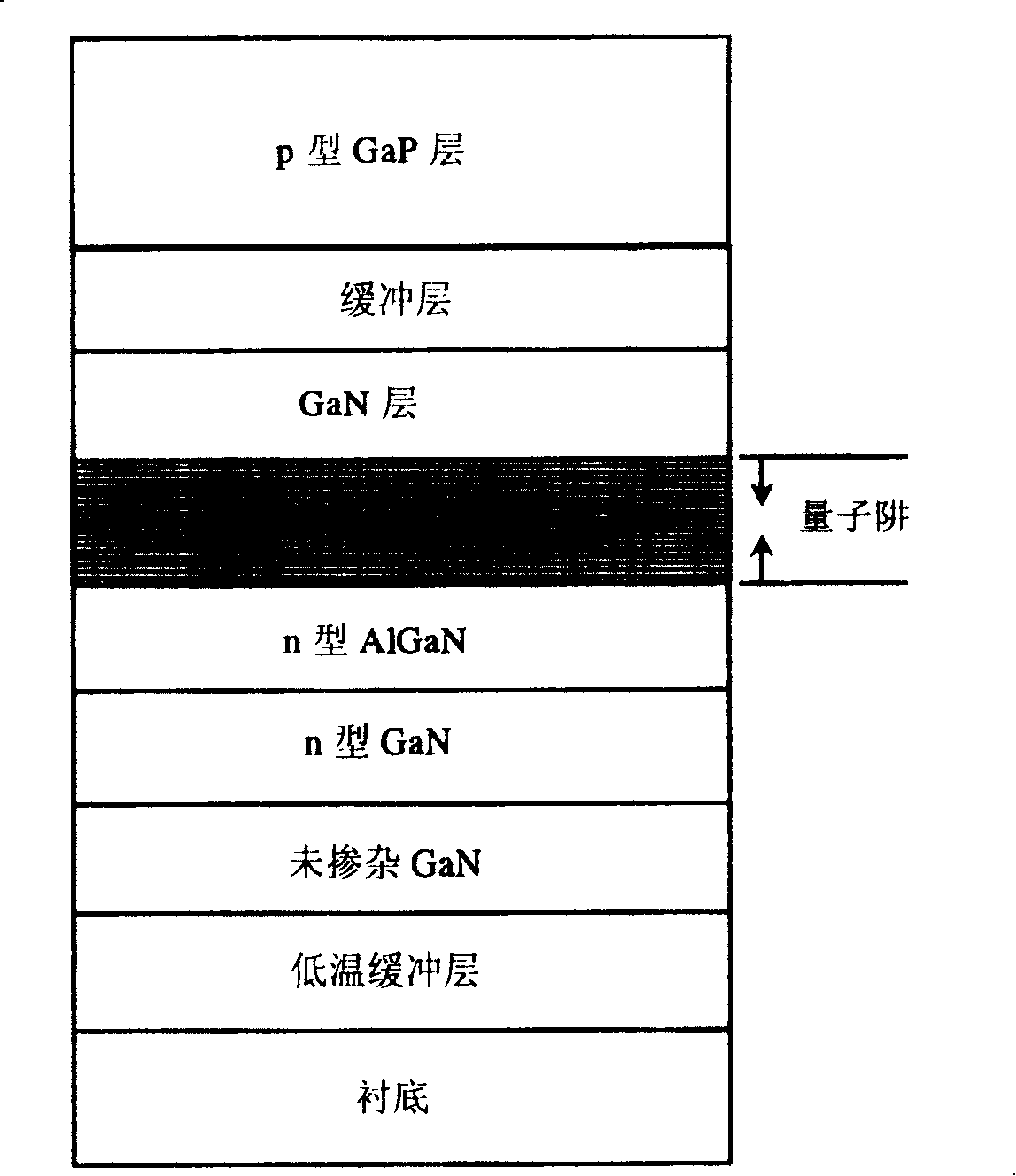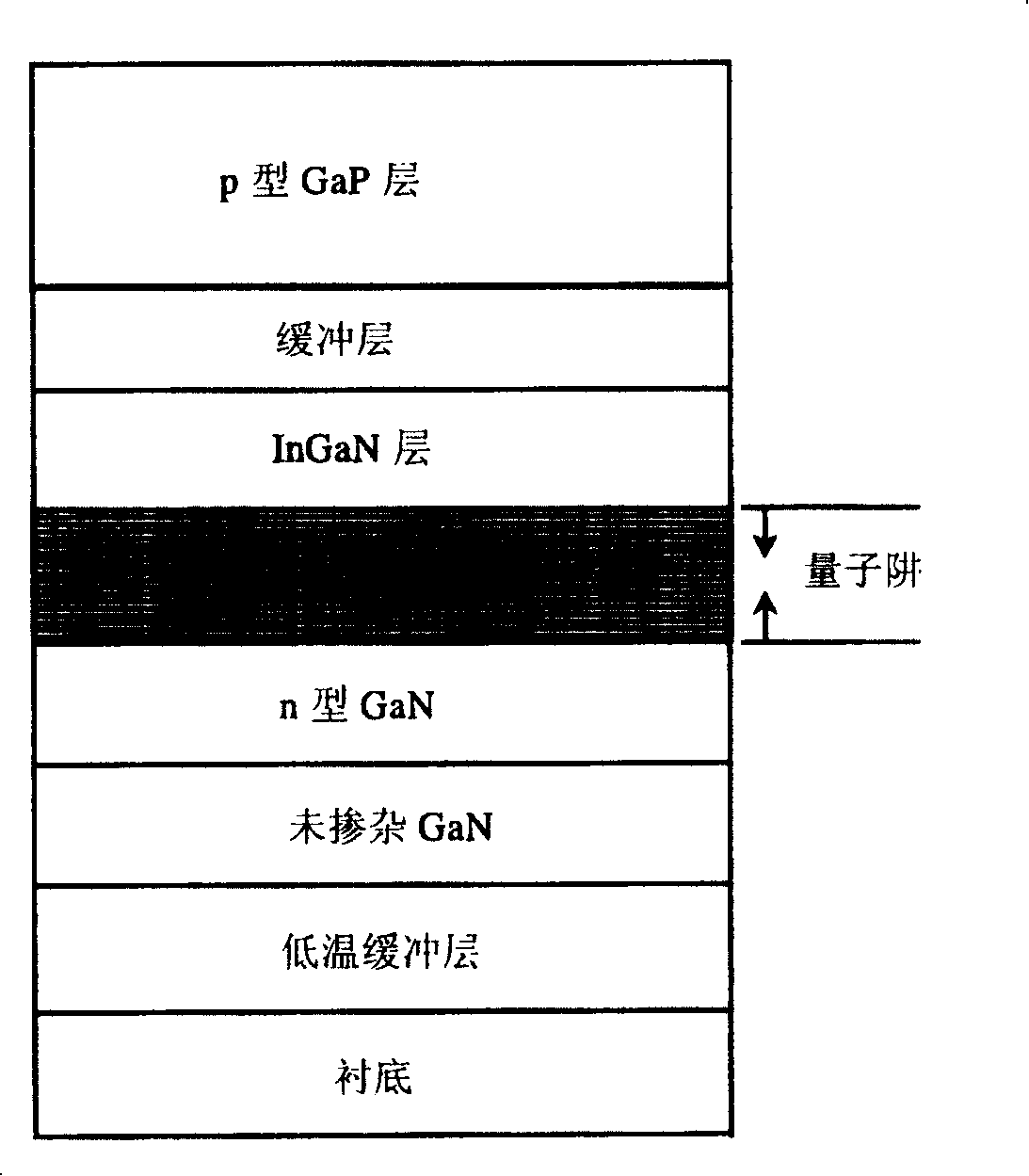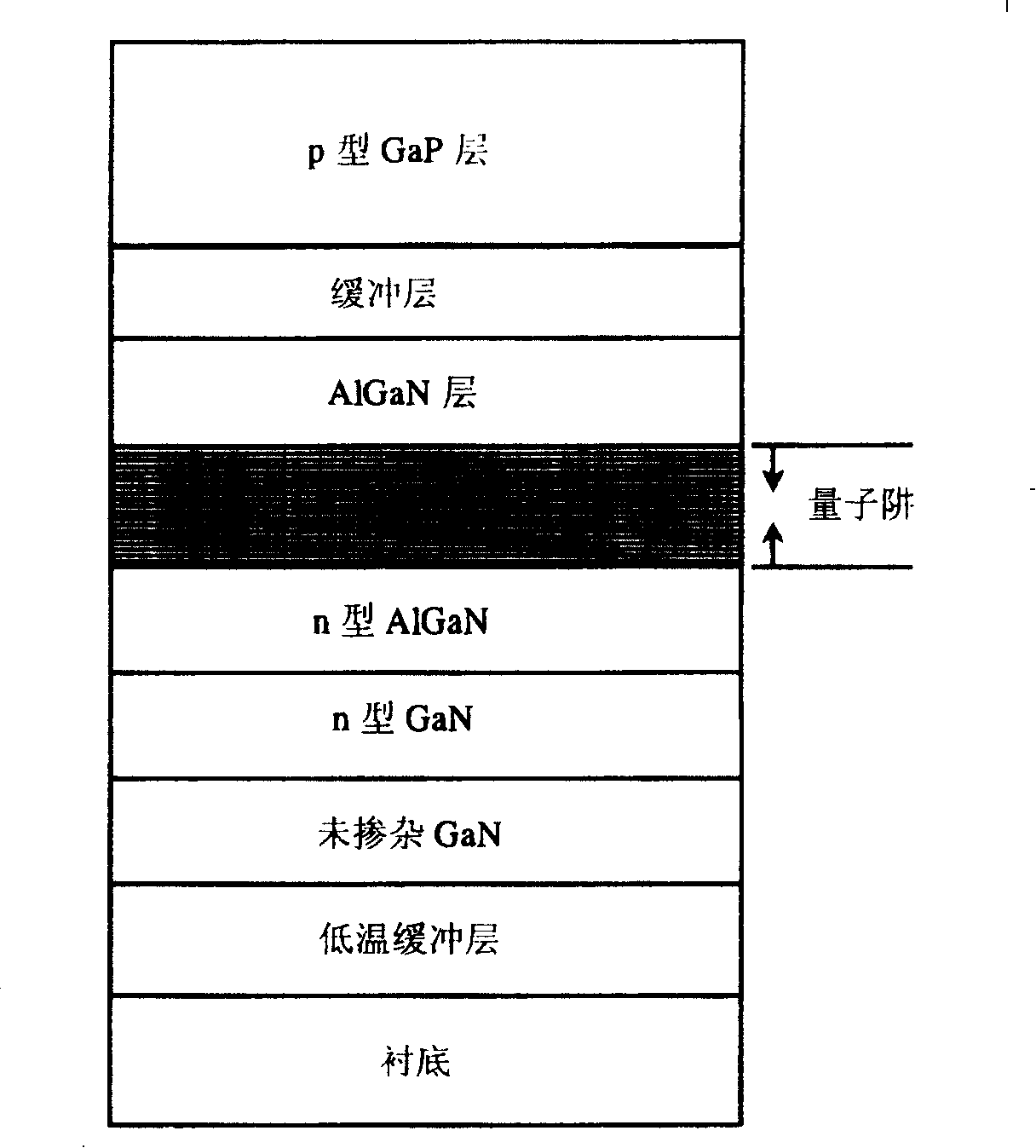GaN-based LED extension sheet and its preparation method
A technology of LED epitaxial wafer and confinement layer, applied in electrical components, circuits, semiconductor devices, etc., can solve the problems of uneven current diffusion and less hole injection, and achieve increased external quantum efficiency, increased recombination, and enhanced confinement effect of action
- Summary
- Abstract
- Description
- Claims
- Application Information
AI Technical Summary
Problems solved by technology
Method used
Image
Examples
Embodiment 1
[0036] The structure of the new GaN-based LED epitaxial wafer is as follows: figure 1As shown, from bottom to top are substrate, low temperature buffer layer, undoped GaN layer, n-type GaN:Si layer, n-type AlGaN:Si layer, quantum well, n-type GaN confinement layer, buffer layer, p-type GaP : Mg layer.
[0037] Its preparation method is:
[0038] 1) Use MOCVD dedicated to GaN, heat up to 1000°C and bake the substrate for 10 minutes in a hydrogen atmosphere;
[0039] 2) Lower the temperature to 480°C, and grow a GaN low-temperature buffer layer with a thickness of 30nm on the substrate;
[0040] 3) heating up to 1050° C., and growing an undoped GaN layer with a thickness of 2.0 μm;
[0041] 4) growing an n-type GaN:Si layer with a thickness of 2.0 μm at a temperature of 1050° C.;
[0042] 5) Growth of n-type Al with a thickness of 0.1 μm at a temperature of 1050°C 0.1 Ga 0.9 N: Si layer;
[0043] 6) Lower the temperature to 700°C to grow In x Ga y N / GaN multi-quantum we...
Embodiment 2
[0051] The structure of the new GaN-based LED epitaxial wafer is as follows: figure 1 As shown, from bottom to top are substrate, low temperature buffer layer, undoped GaN layer, n-type GaN:Si layer, n-type AlGaN:Si layer, quantum well, p-type GaN confinement layer, buffer layer, p-type GaP : Mg layer.
[0052] Its preparation method is:
[0053] 1) Use MOCVD dedicated to GaN, heat up to 1000°C and bake the substrate for 10 minutes in a hydrogen atmosphere;
[0054] 2) Lower the temperature to 480°C, and grow a GaN low-temperature buffer layer with a thickness of 30nm on the substrate;
[0055] 3) heating up to 1050° C., and growing an undoped GaN layer with a thickness of 2.0 μm;
[0056] 4) growing an n-type GaN:Si layer with a thickness of 2.0 μm at a temperature of 1050° C.;
[0057] 5) Growth of n-type Al with a thickness of 0.1 μm at a temperature of 1050°C 0.1 Ga 0.9 N: Si layer;
[0058] 6) Lower the temperature to 700°C to grow In x Ga y N / GaN multi-quantum w...
Embodiment 3
[0066] The structure of the new GaN-based LED epitaxial wafer is as follows: figure 2 As shown, from bottom to top are substrate, low temperature buffer layer, undoped GaN layer, n-type GaN:Si layer, quantum well, n-type InGaN confinement layer, buffer layer, p-type GaP:Mg layer.
[0067] Its preparation method is:
[0068] 1) Use MOCVD dedicated to GaN, heat up to 1050°C and bake the substrate for 8 minutes in a hydrogen atmosphere;
[0069] 2) Lower the temperature to 510°C, and grow a GaN low-temperature buffer layer with a thickness of 25nm on the substrate;
[0070] 3) heating up to 1000° C., and growing an undoped GaN layer with a thickness of 2.5 μm;
[0071] 4) growing an n-type GaN:Si layer with a thickness of 1.0 μm at a temperature of 1000° C.;
[0072] 5) Lower the temperature to 600°C, grow an InGaN / GaN multi-quantum well structure, the thickness of the InGaN well layer is 4nm, the thickness of the GaN barrier layer is 6nm, the In composition of the InGaN well...
PUM
 Login to View More
Login to View More Abstract
Description
Claims
Application Information
 Login to View More
Login to View More - R&D
- Intellectual Property
- Life Sciences
- Materials
- Tech Scout
- Unparalleled Data Quality
- Higher Quality Content
- 60% Fewer Hallucinations
Browse by: Latest US Patents, China's latest patents, Technical Efficacy Thesaurus, Application Domain, Technology Topic, Popular Technical Reports.
© 2025 PatSnap. All rights reserved.Legal|Privacy policy|Modern Slavery Act Transparency Statement|Sitemap|About US| Contact US: help@patsnap.com



